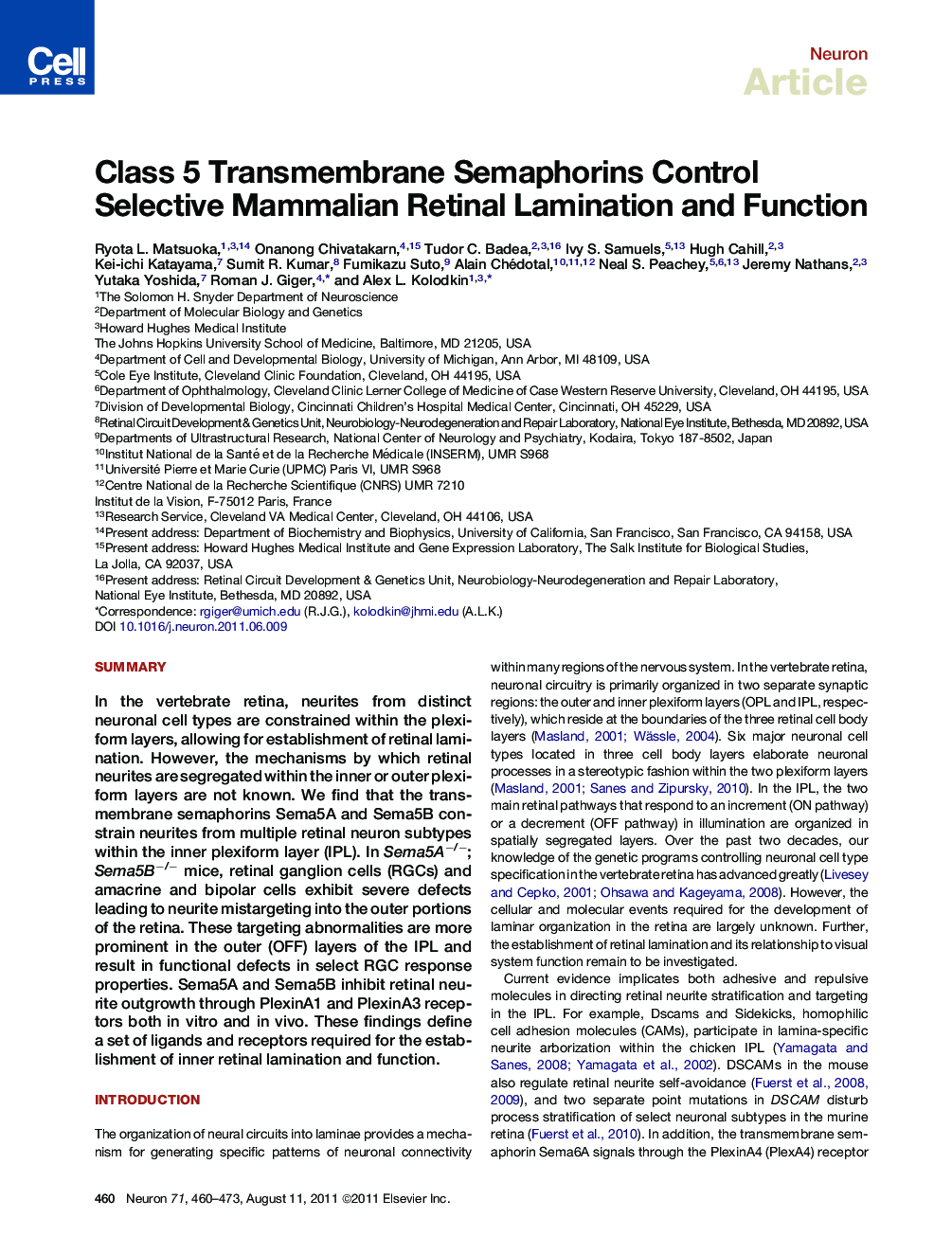| Article ID | Journal | Published Year | Pages | File Type |
|---|---|---|---|---|
| 4321992 | Neuron | 2011 | 14 Pages |
SummaryIn the vertebrate retina, neurites from distinct neuronal cell types are constrained within the plexiform layers, allowing for establishment of retinal lamination. However, the mechanisms by which retinal neurites are segregated within the inner or outer plexiform layers are not known. We find that the transmembrane semaphorins Sema5A and Sema5B constrain neurites from multiple retinal neuron subtypes within the inner plexiform layer (IPL). In Sema5A−/−; Sema5B−/− mice, retinal ganglion cells (RGCs) and amacrine and bipolar cells exhibit severe defects leading to neurite mistargeting into the outer portions of the retina. These targeting abnormalities are more prominent in the outer (OFF) layers of the IPL and result in functional defects in select RGC response properties. Sema5A and Sema5B inhibit retinal neurite outgrowth through PlexinA1 and PlexinA3 receptors both in vitro and in vivo. These findings define a set of ligands and receptors required for the establishment of inner retinal lamination and function.
► Sema5A/5B constrain neurites from multiple retinal neuron subtypes within the IPL ► Sema5A/5B direct anatomical and functional properties of the OFF retinal pathway ► PlexinA1 and PlexinA3 mediate Sema5A and Sema5B inhibition both in vitro and in vivo ► Class 5 semaphorin signaling separates the IPL from the outer retina
